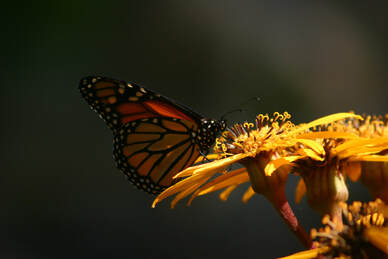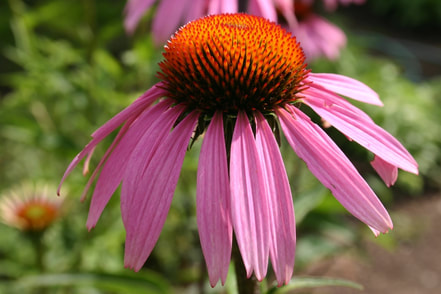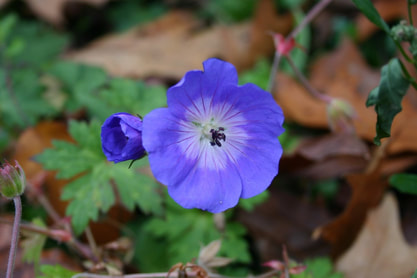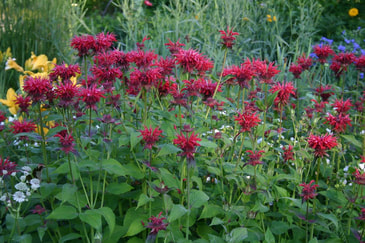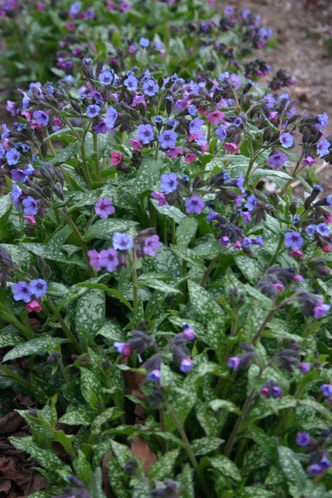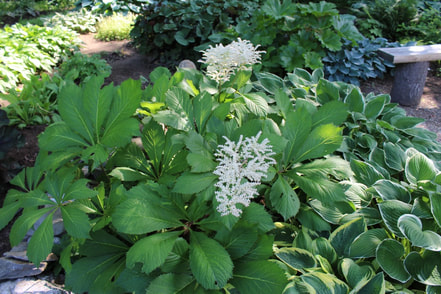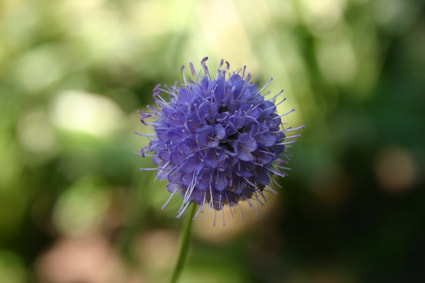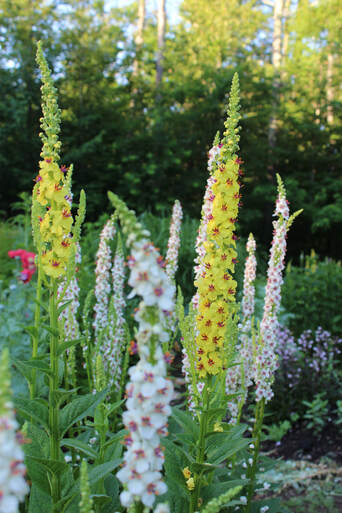Top 16 Picks
Here are some of my favorite plants. I base my decision on several factors. Hardiness and longevity are critical. Long bloom time and or season-long attractive foliage are next. Disease and pest resistance is important, as is attracting butterflies, bees and numerous other pollinators. These are plants that I find myself admiring every time I walk through my gardens.
Here are some of my favorite plants. I base my decision on several factors. Hardiness and longevity are critical. Long bloom time and or season-long attractive foliage are next. Disease and pest resistance is important, as is attracting butterflies, bees and numerous other pollinators. These are plants that I find myself admiring every time I walk through my gardens.
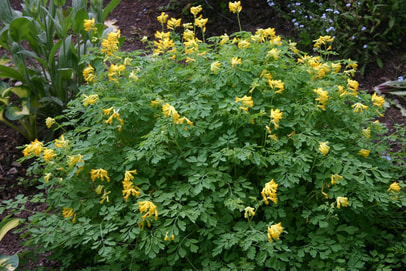
Corydalis lutea - With no common name, this is one of the longest blooming plants for the shade garden. At about 18 inches high, it has ferny green attractive foliage and small yellow flowers that cover the plant from mid spring off and on into the fall. It's not always long-lived, but it does self seed reliably, and will naturalize the shade garden, and it will easily tolerate four or five hours of sunlight.
|
Echinacea purpurea- Most everyone knows the Purple Coneflower. Like a purple daisy at 2 to 4 feet tall, it has flowers that last a long time and keep coming right into the autumn, especially when deadheaded. Butterflies love them. Full or part sun, average soil, they have medicinal roots. I prefer the older cultivars, such as Magnus and Brightstar, and even the species itself. Good cut flower. I've tried several of the new, expensive, reddish and orange cultivars and had disappointing results overwintering them.
|
|
Geranium Rozanne - I'm keeping this one on my list, though I often lose a few their first winter. By the time you buy it from me, it has survived its first, so it should live for a long time. Extremely long blooming, bested only by Tradescantia. Sun or part shade, can be floppy, plant it next to something it can lean on or grow into. 18 " |
|
Monarda didyma ‘Gardenview Scarlet’ Bee Balm- This is an old mildew resistant cultivar. All of the newer ones that I’ve tried have proven to be very short lived or lacking in vigor. Brilliant red flowers July and August on 4 foot tall plants, will grow in full sun to three quarters shade. Bees, butterflies and hummingbirds love it. It does like to be divided and put into fresh, rich, composted soil every couple years or so. Good cut. |
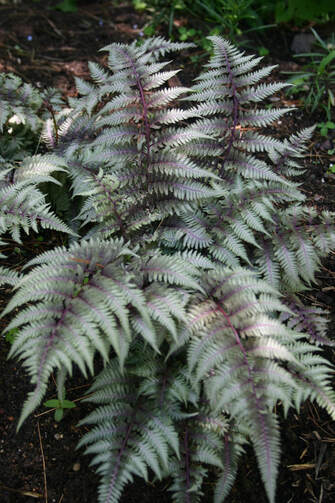
Japanese Painted Fern
Athyrium nipponicum Pictum
My eyes are always drawn to these plants in my shade gardens. 12" tall, long lived, easy to divide, low maintenance- all they need is moist rich soil in partial shade. Two variations have popped up in my gardens over the years- slightly different leaf colorations, but equally as attractive.
|
Pulmonary hybrids-I have grown a number of Lungwort varieties for 30 years, and they have hybridized and self sown in my shade gardens freely. Their green and silver, spotted and variegated leaves are attractive from early spring through November until they’re covered with snow. Pink and/or blue flowers (occasionally white) come early in spring lasting a month or so, and are among the first flowers that hummingbirds visit on their return. Bumble and honeybees also hit them early. About 18" high. |
|
Rodgersia aesculifolia- Rodgers Flower is a great specimen plant for a large area. Its huge chestnut tree- like leaves can be over 2 feet across and the elongated cream-colored Astilbe like blossoms are attractive for months, even after they form seed heads. Rodgersia appreciates rich moist soil and mostly shade. Slow growing, 3 feet tall, but takes up some space. |
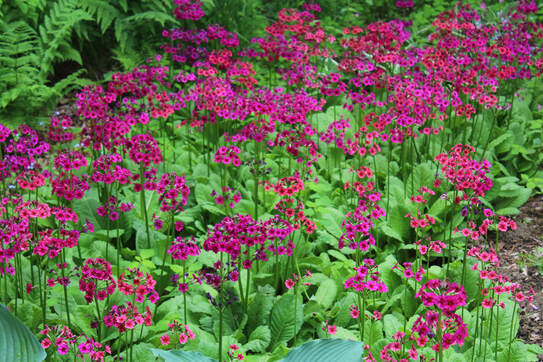
Primula japonica
The Japanese Primrose loves and NEEDS damp or soggy soil, and when it has it, self seeds prolifically, creating an amazing sight. It's one of the candelabra Primroses, with several tiers of blooms making a longer bloom time. The foliage is nice even when not in bloom. About 18 inches high in flower, it will grow in sun or shade. Just don't let it dry out. Most of my plants are red or maroon, with an occasional pink or white.
The Japanese Primrose loves and NEEDS damp or soggy soil, and when it has it, self seeds prolifically, creating an amazing sight. It's one of the candelabra Primroses, with several tiers of blooms making a longer bloom time. The foliage is nice even when not in bloom. About 18 inches high in flower, it will grow in sun or shade. Just don't let it dry out. Most of my plants are red or maroon, with an occasional pink or white.
|
Success pratensis- Sometimes called Devils Bit, you won't find this one at Home Depot or WalMart. Shiny green 6 inch basil leaves send out long wiry stems 3 feet high in August and September with marble sized, pin cushion- like lavender flowers. Will grow in full sun to nearly full shade. Attracts bees and butterflies, and self seeds a bit. Good cut. |
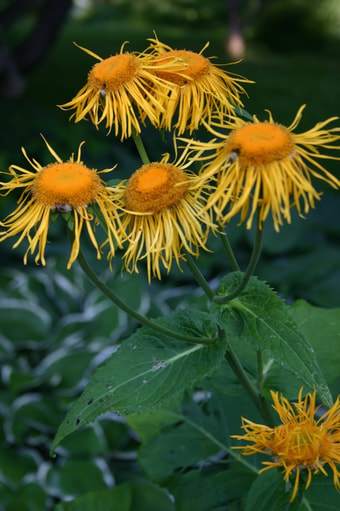
Another uncommon one, Telekia speciosa is unusual for a tall plant in that it reaches 5 feet quickly and flowers in June, July. The yellowish/gold daisy-like blooms attract bees and butterflies. It will grow in sun or a lot of shade, and when the blooms are done, I cut back the flowering stems and it produces a large mound of attractive foliage, and sometimes reblooms a bit.
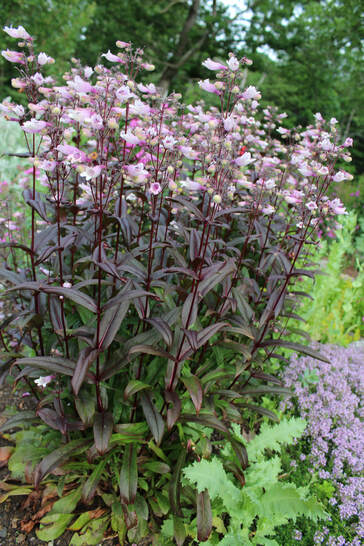
Penstemon digitalis 'Dark Towers' -Tubular pink blooms in the summer attract hummingbirds and are held above burgundy red leaves on this 'Beard tongue'. Full sun brings out the best color. The seed heads are equally as beautiful, lasting well into the autumn, when the foliage turns more red. 30" high. Long lived with little maintenance in well drained soil.
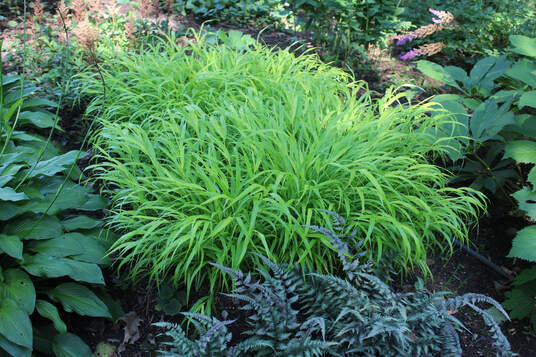
Hakonechloa macra 'All Gold' -Hakone grass is impressive with attractive golden foliage 15 inches high from spring through fall. Pairs well with ferns, hostas, etc. Full shade to part sun, moist soil, long lived, pest and maintenance free.
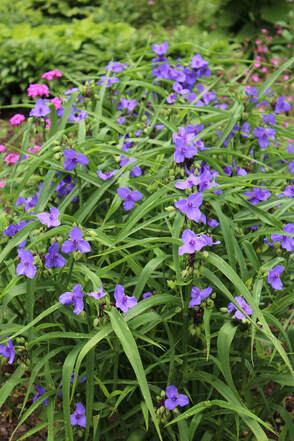
Tradescantia virginiana- This purple/ blue Spiderwort popped up in my garden years ago, seeded in from different colored parents. UNLIKE other varieties, this one is NOT terribly invasive. It flowers non stop from June through September (some years into November) and hosts bumble and honey bees. Not as floppy as other Spiderworts, it can be given a haircut if needed. Sun to 3/4 shade, the flowers close up in the afternoon.
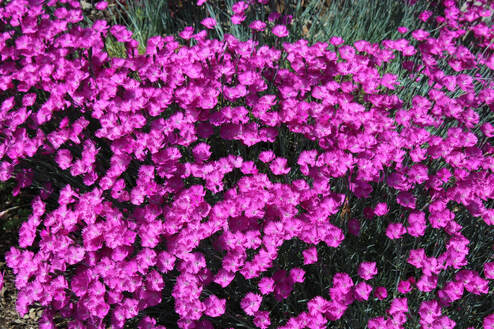
Dianthus gratianapolitanus "Firewitch"
The best Dianthus I've ever grown. Silvery blue foliage looks good even in winter. Stunning fragrant pink blooms May into June. Long lived, slow spreading, likes full sun, well drained soil. 8" A lot of other Dianthus bloom longer, but are not reliable wintering over.
